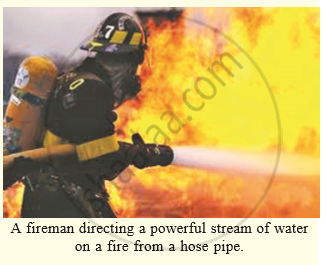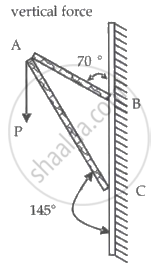Advertisements
Advertisements
Question
Is the following statement true or false :
A rocket can propel itself in a vacuum.
Solution
The given statement is true. A rocket propulsion system works on the principle of conservation of momentum.
APPEARS IN
RELATED QUESTIONS
A stone of 1 kg is thrown with a velocity of 20 m s−1 across the frozen surface of a lake and comes to rest after travelling a distance of 50 m. What is the force of friction between the stone and the ice?
Using a horizontal force of 200 N, we intend to move a wooden cabinet across a floor at a constant velocity. What is the friction force that will be exerted on the cabinet?
What is the force which produces an acceleration of 1 m /s2 in a body of mass 1 kg ?
Draw a diagram to show how a rocket engine provides a force to move the rocket upwards. Label the diagram appropriately.
State Newton’s third law of motion and give two examples to illustrate the law.
Explain why, when a fireman directs a powerful stream of water on a fire from a hose pipe, the hose pipe tends to go backward.
Give a scientific reason.
Even though the magnitudes of action force and reaction forces are equal and their directions are opposite, their effects do not get cancelled.
Give scientific reasons.
It is easier to stop a tennis ball as compared to a cricket ball when both are travelling with the same velocity.
While catching a cricket ball the fielder lowers his hands backwards. Why?
Consider a frame that is made up of two thin massless rods AB and AC as shown in the figure. A vertical force `vec"P"` of magnitude 100 N is applied at point A of the frame.

Suppose the force is `vec"P"` resolved parallel to the arms AB and AC of the frame.
The magnitude of the resolved component along the arm AC is xN.
The value of x, to the nearest integer, is ______.
[Given: sin(35°) = 0.573, cos(35°) = 0.819, sin(110°) = 0.939, cos(110°) = –0.342]
